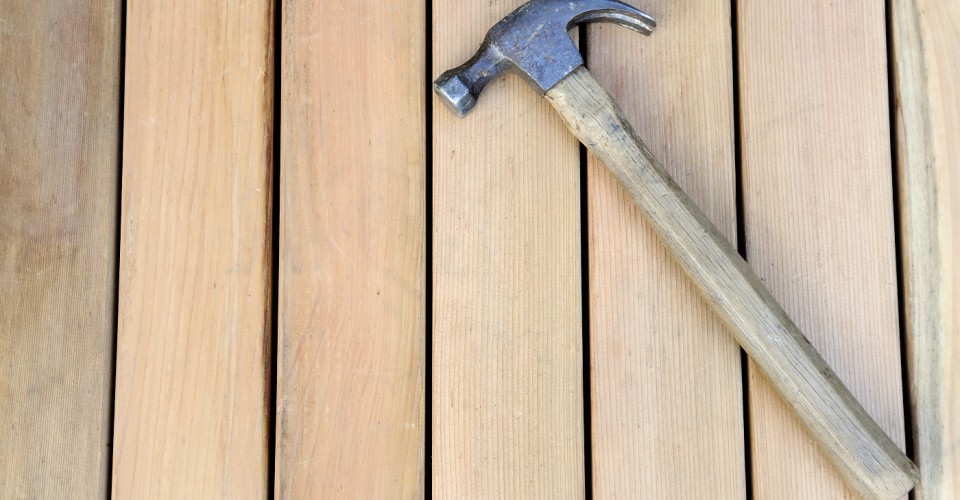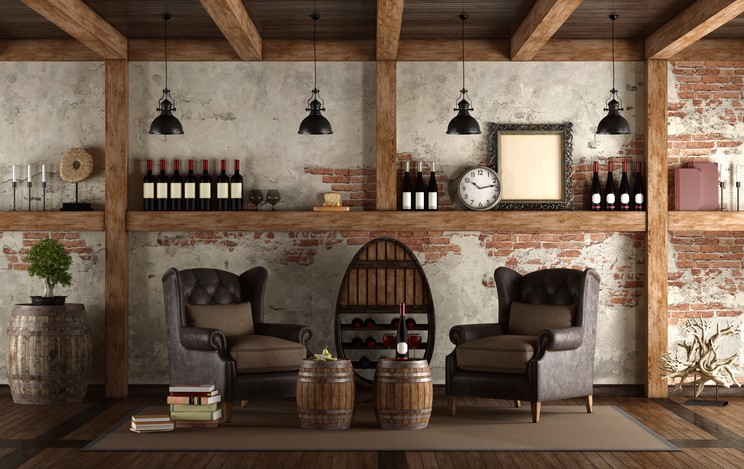The hammer is a basic tool that should be included in your personal or home toolbox. A hammer is a tool that is meant to deliver an impact or force upon an object. Due to the specific shape and design of the tool, it is most often used to drive nails or pry apart objects. It’s a smart idea to know what type of hammer you have, or what type you should have, in your toolbox.
Design
The most common form of a hammer is designed with seven different parts:
1. Head – The solid mass top half of the hammer used to deliver force on impact against an object.
2. Cheek – The side of the head.
3. Face – The striking surface of the head, which comes in various forms depending on use, such as flat, convex, or bell faced.
4. Poll – The surface of the head around the face, connecting the neck to the face.
5. Neck – The surface between the cheek and face that holds the face to enable striking force of the head.
6. Claw – Two-pronged end opposite of the face that is most commonly used to extract nails or gain leverage of an object.
7. Handle – The bottom half of the hammer used to hold by the hand. Modern hammers have built-in shock absorbers and are made of wood, steel, or have a rubber grip for comfortable use.
Types of hammers
Just like a screwdriver or a drill, a hammer comes in many forms, shapes, and sizes. Knowing what hammer style will work the best for your project will help make the process easier. Lowe’s Hammer Buying Guide matches the tool to the job, but the following are a few types of hammers that you may need for your project.
Claw Hammer
This type of hammer is most commonly used for general work, such as driving or extracting nails from a surface or object. The design of this hammer is a standard T-shape while the head of the hammer opposite of the face splits into a V-shape, which is known as the claw. The claw is the part of the hammer that extracts nails. Some claw hammers have patterned faces, which prevents glancing blows while others have flat faces. There are a few different types of claw hammers that can be used for specific purposes.
Curve Claw Hammer – This claw hammer has a curved claw meant for driving and removing nails, specifically to provide leverage by the curve of the claw. Try the 16-oz Fiberglass Curve Claw Hammer at Lowe’s for less than $10.
Rip Claw Hammer – Also meant for driving and removing nails, this claw hammer has a straight claw design that is better suit for ripping out boards. Rip claw hammers tend to be constructed larger for greater strength and durability. Try the 20-oz Steel Rip Claw Hammer at Lowe’s for just under $20.
Framing Hammer – This kind of hammer can perform the same tasks as the other claw hammers, but it is typically meant for more heavy carpentry work. Some framing hammers have ridged faces and flatter claws. The framing hammer should be used for larger projects as it has added weight and a longer handle to drive more power. Lowe’s Bostitch 28-oz Smooth Straight Handle Hammer for just over $30 has a large strike face for better accuracy and is built to minimize shock at impact.
Ball Peen Hammer
This type of hammer is used for bending and shaping metal. Built in various shapes and sizes for punching, riveting, and straightening metal, this type of hammer is high in strength and power. The heads are most commonly made of carbon steel with cushioned handles for good grip. Different from the claw hammer, the ball peen has a rounded opposite end of the face, rather than a V-shape claw. For a standard version, try the Kobalt 16-oz Hickory Ball Pein Hammer at Lowe’s for less than $25.
Club Hammer
Used for more fragile objects, the club hammer, also known as the rubber mallet, provides a softer blow than a metal hammer would. Projects involving sheet metal or upholstery typically call for a rubber mallet. The design of this type of hammer is a larger head made of rubber, but also sometimes wood or lead, and a standard straight handle. The 16-oz Hickory White Mallet with StrikeShield at Lowe’s for under $10, provides a rubber head to minimize surface damage.
Sledgehammer
For heavier jobs like driving in stakes, breaking up concrete or other demolition, a sledgehammer is larger than the standard claw hammer and has a flat head attached to the handle. The head is usually made of metal to provide greater force on an object. The sledgehammer differs from other hammers in that it can distribute force over a larger area. For a high quality, durable hammer, Lowe’s Kobalt 10-lb Steel Sledge Hammer with 34-in Fiberglass Handle is top notch for around $30.
Why should you have a hammer?
The most basic types of home improvement projects need a hammer to complete the job. Whether you need to remove nails or put pieces of furniture together, a hammer is a helpful tool to have on hand. A good quality hammer will make all the difference when purchasing this tool, as a cheap or faulty hammer can be dangerous to you and your home. Some cheaper hammers have the potential to snap or the head can detach causing potential injuries. Just like with any use of tools, safety always comes first. If you do not know how to properly use the specific hammer you have or are unsure what kind of hammer you should use for a specific project, proceed cautiously or consult a professional on Porch.




